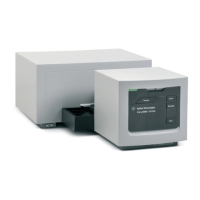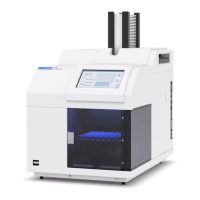8 ChemStation Workflow
1 ChemStation Data Structure
ChemStation B.02.01 and higher
The data storage pattern varies depending on whether single run data or
sequence data is acquired:
1 When a sequence is executed, a new folder is automatically created
(sequence container) with a unique name in the specified subdirectory.
When a single sample is run, the data file (*.d) is written to the
specified subdirectory.
2 For sequence data, the executed sequence template (*.s) and all the
methods (*.m) involved are copied into the sequence container. The
copies of the methods are called the sequence methods in order to
distinguish them from the original master methods.
All sequence- related tasks (e.g. acquisition and data analysis) are
performed on the copies of the sequence and the methods. Therefore,
the sequence template and the master methods remain unchanged for
future sequence execution.
Any changes performed on the sequence during sequence during
acquisition, e.g. adding lines to sequence table, are performed on the
copy of the sequence file in the sequence container. The sequence
template remains unchanged.
Similarly, any changes in the method, i.e. updates in the calibration
table in case of calibration runs, are reflected in the sequence methods,
but not in the master methods.
While executing the sequence, all generated data files (*.d) are stored in
the sequence data folder, along with the corresponding batch file (*.b)
and sequence log file (*.log).
3 Each data file contains two copies of the method used to create the
run.
• The first one, called ACQ.M, is saved directly after the acquisition
part of the method is completed.
• The second copy, called DA.M, is saved after completion of the data
analysis part.
Both of these methods contain the complete method parameters,
including acquisition and data analysis parameters.
ACQ.M is intended to ensure the preservation of the original method
parameters for each specific data file. The acquisition parameters can
be viewed and printed in Data Analysis view.

